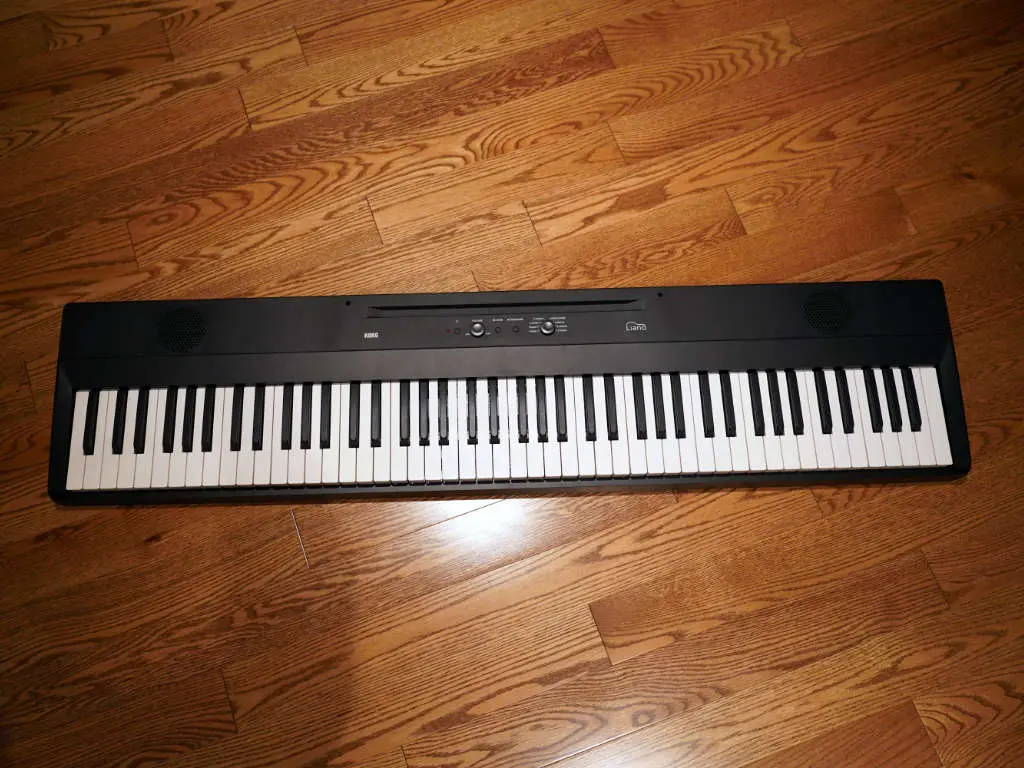
Many beginners learn the piano on a compact, digital keyboard. These models usually offer many different options, as well as multiple sounds, in an affordable package. The Korg Liano L1 is one of these models. I’ve recently taken it for a spin and I’m here to report on how it feels and performs.
First of all, check out this video showcasing some of the built-in sounds of the Korg Liano L1, as well as my initial impressions.
Korg Liano compact design
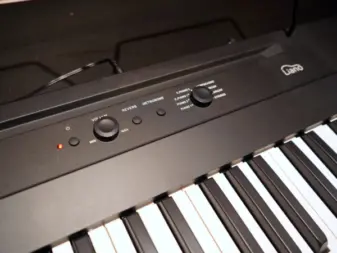
The Liano is a very streamlined, simple product. It’s designed to be affordable, but still bring a certain level of quality that will attract some more experienced players.
The first thing you will notice about the Korg Liano is how small it is. It is only 7 cm thick and that’s including speakers. It also has a very small depth at 130 cm. This means it will fit in any environment and on any surface, despite its 88 keys. The action is lightweight, which helps with the weight in general. All of this amounts to an easy to carry keyboard. It’s ideal as a travel option for rehearsal and lessons, but also for home practice. It only weighs 6 kilograms.
Liano L1 connections and accessories
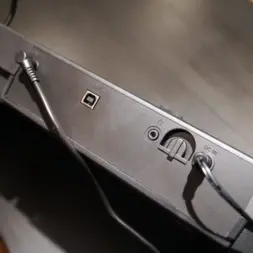
On the back panel of the Liano, you’ll find a headphone output. This is great for silent practice and also for beginners that need to repeatedly go over passages to get them down. Also, there is a USB port. This makes it possible to transmit MIDI information to a computer or external sound banks. Furthermore, you can even use it as an audio interface. This enables you to record your piano directly to your computer, without having to buy any extra equipment. The built-in speakers will provide monitoring. It’s what I used to record the samples in the video above. You can also interface with your smart phone and tablet (make sure you have the correct adapter or cable for Apple products or USB-C ports).
The product is shipped with a music stand (to hold your sheet music), a damper pedal (to add sustain to your playing), and a power adapter. You don’t need an outlet to turn on the Liano though, you can power it with 6 AA batteries, for approximately eight hours of continuous use. Your purchase also includes extra software such as a 3-month membership to Skoove, Korg’s piano app. You’ll also get tools that integrate with DAWs: Korg Module and Gadget 2.
Lastly, Korg offers the Liano in six different colours; Black, Metallic Blue, Metallic Grey, Metallic Red, Metallic Silver, and Pearl White.
Liano piano speakers and sound
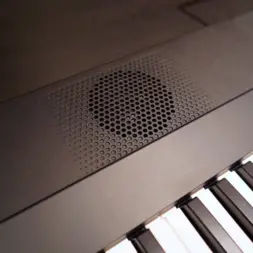
Sound-wise, the Liano has 8 different built-in tones. You’ll find the most common of sounds in this collection. You’ll have a choice of two acoustic pianos, two electric pianos, a harpsichord, pipe and electric organ, and a set of strings. Polyphony is capped at 120, which is generally more than enough for the vast majority of applications.
Additionally, there are two effects you can add: reverb and chorus. The reverb is accessible through the main panel, while the chorus is adjusted and activated through secondary functions of the keys. These include touch adjustment, transposition, and metronome control. Simply hold both reverb and metronome buttons to have access to them.
The top of the panel houses two 8-watt speakers. Their position ensures that you get an excellent playing experience no matter where you lay the instrument. To counteract their smaller size, the bass response is reinforced with bass ports. This adds extra realism to the tones.
Playing the Korg Liano digital piano
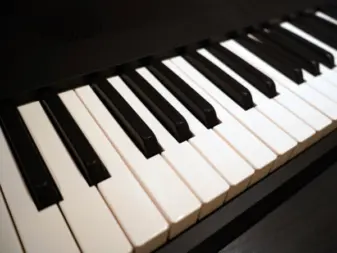
After working with the Korg Liano for a few minutes, I was pleasantly surprised by the action. Although it is light and doesn’t feel like an acoustic piano, it’s a lot of fun to play. Lightweight keys aren’t inherently bad; a lot of instruments are played more appropriately with them than a heavy action. Teachers often insist on this feature for beginners though. This is because it develops and reinforces strong technique that is easy to transpose to acoustic instruments. On this instrument, the keys are very smooth and pleasant; especially good if you plan on using it as a controller for external sound banks.
The sounds are rather good for the most part. The piano in particular is actually impressive and you won’t feel like you’re playing on budget keyboard. This is especially true when using headphones or direct recording. However, it would’ve definitely been nice to see some more tones included in the Liano. For my part, I rarely use something like a harpsichord so maybe an extra electric piano or a set of strings would be more valuable for the average player. In any case, you can easily interface with external sound banks thanks to the USB connection.
Who is the Korg Liano L1 for?
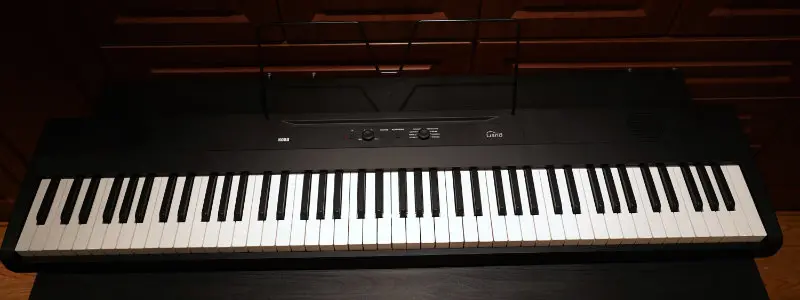
Beginners will definitely find a great learning platform in the Korg Liano. It’s simple and streamlined, which helps with staying focused on practice and learning. It’s easy to get distracted by a ton of features and options, so this is often a good thing for many young players. That being said, there are interesting options to help you grow to a good level. The built-in audio interface is the perfect example of this. You’ll be able to work on original material and recording, as well as controlling external sound banks for an endless amount of added tones.
Established pianists and keyboardists might also be interested in such a model. Its portability is unmatched, making it an excellent choice for travelling musicians. You don’t even need power to get it working, thanks to the battery option. While it doesn’t have dedicated outputs for live playing, you can still use the headphone out. Keep in mind you’ll have to arrange some kind of monitoring to hear yourself properly, as the speakers will be disconnected.
No matter what your level of playing is, the Liano is a good choice to fill various needs. It’s an affordable instrument that will be welcome in the hands of beginners and advanced musicians alike. The USB connectivity adds a certain amount of future proofing for those just starting out.
Make sure to check out the Korg Liano on Best Buy’s website.



